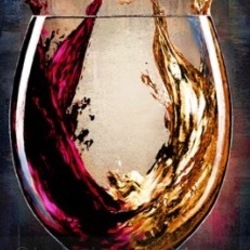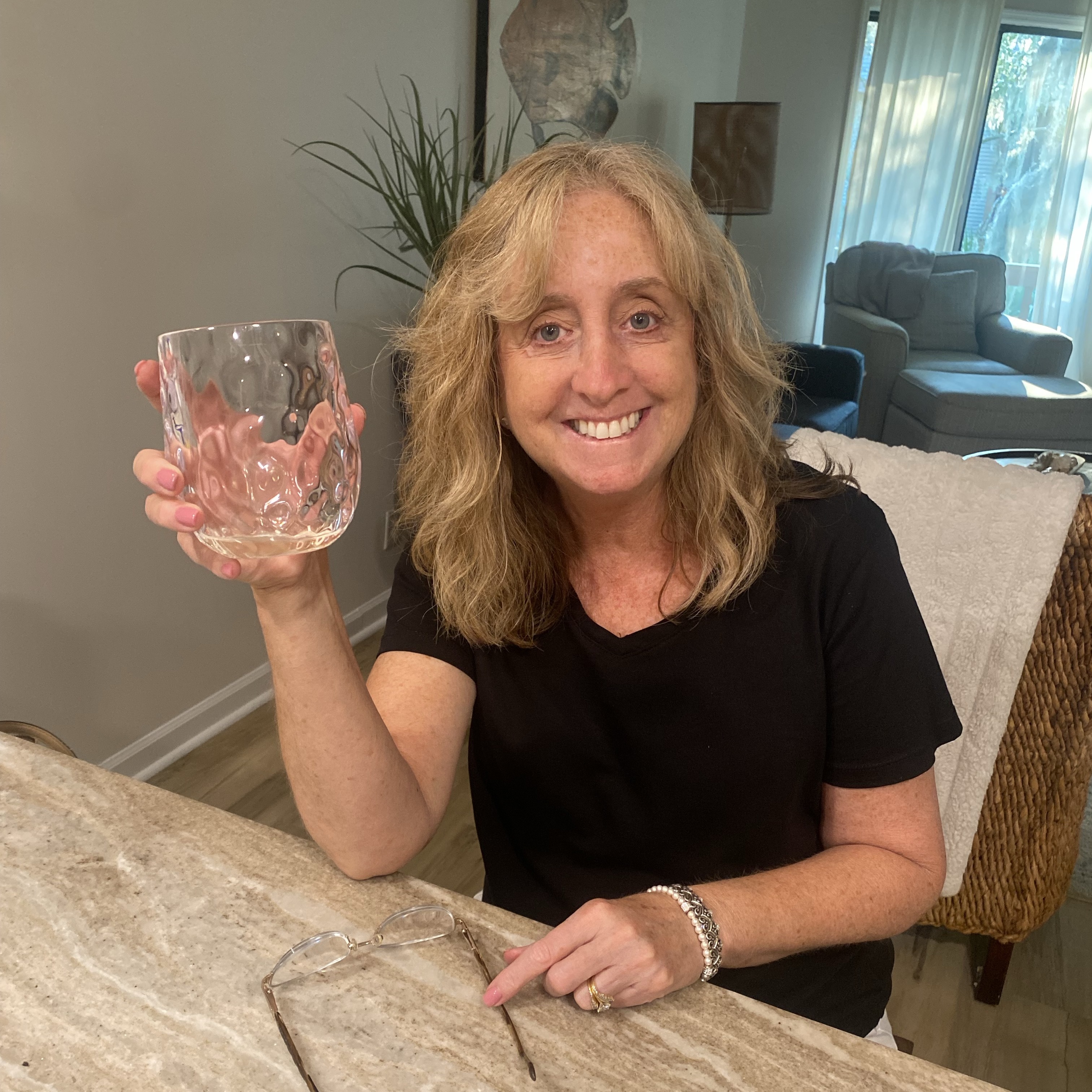Engine House 25 Wines
Raventos i Blanc
L'hereu Conca del Riu Anoia Blanc de Blancs Xarello Blend 2015

La Pitchoune
Van der Kamp Vineyard Pinot Noir 2014
Second stop in Sonoma with Andrew Berge of Spell Estate, La Pitchoune and Tiny House to name a few. Next red from La Pitchoune is their Van der Kamp Vineyard. Aged for 11 months in 25% new French oak barrels and only 98 cases produced.
Brick red edges with a medium ruby core. More red fruit on the nose than the VDK Pinot Noir with notes of violets, lilac and twigs. Medium plus acidity (7/10) and a medium plus body. Layered palate with raspberries, some cassis, spices, especially cinnamon and crushed gravel. Lengthy finish with acidity lingering. Drink till 2028. $$ — 7 years ago
La Pitchoune
Holder Vineyard Russian River Valley Pinot Noir 2014
Second stop in Sonoma with Andrew Berge of Spell Estate, La Pitchoune and Tiny House to name a few. Next red from La Pitchoune is their Holder Vineyard Pinot Noir. Aged for 11 months in 25% new French oak barrels and only 98 cases produced.
Medium ruby red with brick edges. Complex nose with elegant layers of spices, sweet tobacco, leather, black raspberries and purple flowers. Medium plus acidity (7/10) and medium bodied. Earthy attack on the palate with some strawberries, rose water, raspberries and violets. Dry and long finish. Drink till 2028. $$$ — 7 years ago
Canard-Duchêne
Authentic Rosé Brut Champagne Blend
45% Pinot Noir / 30% Chardonnay / 25% Pinot Meunier
On the nose, strawberry shortcake, raspberry and citrus peels.
On the palate, red raspberry/currant and minerals. Dry.
At $40 I have not seen a better brut rosé bottle at this price point. This is the stuff I want to flow out of my faucet when I turn the handle! We can never have enough of this Champagne! Seek and you will be rewarded.
Producer Note:
Canard-Duchêne is unique in its origins, history and style. The Champagne house has been located in Ludes, in the Montagne de Reims National Park, since 1868, and is one of the original Grandes Marques. Its founders, Victor Canard and Leonie Duchêne, both well-known characters in Champagne, were granted the right by the Russian Imperial Family to adopt its coat of arms as the family emblem. The crowned two-headed eagle has thus appeared on every Canard-Duchêne label since the end of the 19th century. These authentic, original Champagnes combine fruit, intensity and complexity.
@David T
This is my version of your Billecart-Salmon Brut Rosé. — 8 years ago

Wildflower
Gold Australia Wild Ale
Blend 3. Winey ale's very tasty. Producer's notes are pretty spot on imo, even the [reductive?] funk when first opened.
From Wildflower's website:
Gold is a blended, barrel aged Australian Wild Ale. Blend #3 is a blend of two barrels, 1726 and NoSai. The beer in 1726 was brewed on 27 February 2017 and racked into the barrel on the last day of that month. At blending, this barrel was showing great signs of both our house culture and a fresh example of Gold. It had a subtle acidity while still displaying fresh lime and citrus characteristics. NoSai, the sister of sponsai in Blend #1, was brewed clean and remained intentionally uninfected for the majority of its life. Alone, the beer was quite oaky with a lengthy body from the raw wheat and extended maturation in oak. The intention for this blend was to bring some fresher characteristics to Gold like stone fruit, lime, grapefruit and lemon. Ongoing, this is really what we would like to see; however, the blended beer still has great notes of barrel character with a long mouthfeel and oak.
The base beer is brewed entirely with New South Wales cereals: Single Origin (S.O.) Moree, NSW grown Gairdner ale malt and North Star, NSW grown Spitfire S.O. raw wheat thanks to Provenance Malt, and Riverina grown Janz S.O. raw wheat from Voyager Craft Malt. It is made with filtered Sydney water and Motueka (NZ) and Saaz (CZ) hops. Finally, it was fermented with our house culture: brewers yeast, foraged wild yeast and naturally occurring souring bacteria native to New South Wales. It was bottled on May 4 2017 and naturally conditioned through refermentation for 4 weeks. At bottling it was 5.0% ABV, 25 IBU and 0.8°P (FG= 1.003 SG). — 8 years ago
Mud House Wines
Central Otago Pinot Noir 2015
Nice fruity good value at £7 from Tesco on 25% off — 8 years ago
DavenLore Winery
Cabernet Sauvignon
Lisa's house 6/25/16 — 9 years ago
Ranch House
Napa Valley Cabernet Sauvignon 2012
9/25/15@$29 Very good Plum. Taste sample with don. Like it. — 10 years ago
Taittinger
Réserve à Reims Brut Champagne Blend
House champers quality every time. For £25 a bottle value choice.
40% Chardonnay 35% Pinot noir 25% meunière
Jeans fav — 10 years ago
Folie à Deux
Ménage a Trois North Coast Cabernet Sauvignon 2011
Reminds me of the 25/5 we'd have with a steak dinner at Peter and Shelly's house. Brought back some good memories of our staycation house. — 11 years ago
Château Moulin de Blanchon
Haut-Médoc Red Bordeaux Blend 2001
Super soft and mellow without being empty. This wine was much more than a house of cards;acid,balance,earth,wood,all kinds of terroir. Steal for $25 — 12 years ago
Château Duhart Milon
Pauillac Cabernet Sauvignon - Merlot Blend 2006
The 06 vintage was more highly praised by the Bordelais than it delivered. That’s not to say, some producers didn’t deliver.
This 06 is not at its peak...still needs a few years. Will it be a wine that blows you away? Not likely but, it will deliver nice fruit, earth & balance. Especially, with a Ribeye.
The nose shows; ripe; blackberries, dark cherries, black raspberries, baked strawberries, dry cranberries & some black plum. Saddle-wood, limestone minerals, dry stones, cinnamon, soft spice, light vanilla, black rich earth, touch of black licorice and red & dark fresh florals.
The body is round and a little lean but puts on weight with food and decanting. The structure, length & tension are falling into place. The fruits are ripe and expressive. Blackberries, dark cherries, black raspberries, baked strawberries, haunting blue fruits, dry cranberries & some black plum. Saddle-wood, touch herbaceous, mint, limestone minerals, dry clay, dry stones, cinnamon, soft spice, cola, light vanilla, black rich earth, touch of black licorice and red & dark fresh florals. The acidity is round and beautiful. The finish is on the leaner side but, well balanced and lasts a full minute. 9.1 without the Ribeye, 9.2 with it.
Photos of, Duhart Milon, Cabernet ready to to be pressed, wine making facilities and their barrel room.
Producer history and notes...the Rothschild family is divided into two sects for lack of a better word. There are the ones that own Mouton Rothschild and Cleric Milon etc. and the other owns Lafite and Duhart. The two sides of the families don’t necessarily get along. However, they are two of the oldest/wealthiest families in recorded history.
Duhart Milon was originally known only as Chateau Milon. At one time the estate was the second wine of Chateau Lafite.
The story about how this came to be is interesting. The owner of Lafite at that time was the Marquis Nicolas-Alexandre de Segur. King Louis XV called him “The Wine Prince” because of his extensive vineyard holdings in Bordeaux. The Milon vineyards were well regarded but, not as good as Lafite, which is how the wine came to be thought of as the second wine for Lafite.
In 1815, the property was considered by some people as a fourth growth Bordeaux wine in the making. In those days, the wine was sold under the name of Chateau Mandavy-Milon. Between 1830 and 1840, the Casteja family inherited the estate.
The label of Duhart Milon, according to family tradition came about from an old legend written about one of their ancestors, Sir Duhart. Sir Duhart, was rumored to have been a pirate for Louis XV. He retired in Pauillac. The “Pirate’s House” on the Pauillac port existed up to the 1950’s. That original building inspired the label for the Duhart-Milon wines.
The Casteja family remained in possession of Duhart Milon until the first part of the 20th century. At the time, Chateau Duhart Milon was one of larger Pauillac estates with around 50 hectares of vines.
In 1937, the result of successive inheritances led to the sale of Duhart Milon. The Left Bank property went through five different owners in just 25 years. As well, the vineyards were split up and with the frost of 1956, the quality of Duhart Milon continued declining until the Rothschild family purchased the property in 1962.
At that time of the sale, Chateau Duhart Milon included 110 hectares of land, of which only 17 hectares were planted with vines. The entire vineyard was in desperate need of replanting. Major renovations were urgently needed in the vineyards, which demanded work on the drainage and replanting.
The size of their vineyards were also increased with the purchase of other parcels adding to the size of their Medoc holdings. New cellars needed to be built as well.
Chateau Duhart Milon remains one of the few 1855 Classified Growth estates without an actual Chateau. At Duhart, all you will find are the cellars, vatting rooms and barrel storages.
During the period of 1970 to 2000, the vineyards nearly doubled in size! Additionally, they constructed new cellars, renovated and modernized their wine making facilities as well in 2003. By 2008, the wine of Duhart Milon increased in quality, stature and price.
Much of the price increase had to do with the association with Chateau Lafite Rothschild, which had by that time, become the most in-demand, collectible wine in China. By the time the 2015 vintage was offered, prices had dropped to a more affordable price level due to changes in Chinese laws regarding client gifts/bribes.
The 152 hectare vineyard of Chateau Duhart Milon includes; 76 hectares of vines planted to 67% Cabernet Sauvignon and 33% Merlot. This makes Chateau Duhart Milon one of the few 1855 Classified Growths with only two grape varieties planted in their vineyards.
The average age of the vines are 30 years old. The vineyard is planted to a vine density of 7,500 vines per hectare.
Duhart Milon vineyards are located in northern Pauillac, on the western side of Chateau Lafite Rothschild, on the Milon hillside, which is not far from the Carruades plateau...now Lafite’s second wine. This places the vineyard quite close to Chateau Mouton Rothschild and Chateau Clerc Milon. However, because of micro climates, this is a slightly cooler terroir, due to its northern exposure.
The naturally cooler soils provides more freshness to the wine, and allows for later picking. The terroir of Chateau Duhart Milon is a combination of gravel, sand and limestone soils. The Duhart Milon vineyards are unique in Pauillac, as the vines are for the most part, located in 1 single, large parcel.
The vinification of Chateau Duhart Milon takes place in temperature controlled stainless vats. Malolactic fermentation takes place in vat. Chateau Duhart Milon is then aged in an average of 50% new French oak barrels for 14 to 16 months, depending on the vintage.
There is a second wine, Moulin de Duhart, that was created in 1986. There is also a third wine produced by the estate, Baron de Milon. — 7 years ago


Paul Hobbs
Beckstoffer Las Piedras Vineyard Cabernet Sauvignon 2013
8/25/17 Towne House with my love — 8 years ago
Daou Vineyards
Paso Robles Cabernet Sauvignon 2015
The birthday festivities continue. Dad was in town, and that means dinner at the best seafood place in New Orleans. Pictured is Scalibut. Halibut infused with scallops. Bruh....
Now to the wine. I've seen this in the store, but just haven't picked it up. I think it's relatively affordable at $25-$30'ish. Bite down on a piece of leather while walking through a cellar full of young oak barrels and you've got a pretty good baseline. Couple that with some juicy, ripe fruit and the tiniest hint of vanilla. BOOM! There you have it. I liked this quite a bit. Enough for two bottles. Will definitely keep some at the house. — 8 years ago
Tommasi
Valpolicella Ripasso Classico Superiore Corvina Blend 2014
2014 Ripasso Valpolicella Tommasi Viticoltori. Im giving it a high score because if the cost and the fantastic flavors. For around 25 dollars this is a fantastic wine if you like what I like. It is young, but very drinkable for those who cannot wait. Bouquet is wild cherry jam. The initial palate is light with a zing! There are hints of black cherry , vanilla, and dark currant. The finish is mildly dry with earth tones of oak and tobacco. It is a very nice wine for any dinner date! Or perhaps the house wine at your next big party!!!! — 8 years ago
Brick House
The Dragon's Tale Ribbon Ridge Gamay Noir 2013
Such an awesome Beaujolais style red from Oregon! Kudos to Brick House: their 40 acre property houses both a farm + winery, and has been an organic, biodynamic estate for 25 years. Everything is done by hand and all the fruit is estate grown. It is on this sprawling utopia where former CBS newsman and now Brick House proprietor Doug Tunnell produces only 20-30 cases (!!) of ‘The Dragon’s Tale’ gamay noir (a traditional French varietal found in Beaujolais).
This 2013 gamay gem is juicy yet rustic with plenty of cherry notes both on the nose and palate, accompanied by flavors of toasted nuts, fresh violets, and thyme. Only a hint of tannins. Reminiscent of cherry pie on a farm! Would be great with spice rubbed pork or grilled
salmon.
— 9 years ago
Paul-Etienne Saint Germain
Grand Cru Charme Champagne
A blend of 75% Pinot noir and 25 Chardonnay. This champagne house is only 10 years old but their family has been in champagne for several generations. More complex with all the fruit coming from the 2009 vintage and this wine is aged for over 3 years this wine has a full bouquet of white flowers almond with pear and quince like fruit. A good amount of richness on the palate fresh fruit very fresh. Very rich but lovely freshness and lovely balance. Finish 45+ excellent + — 10 years ago
Castlebank Vineyards
Vivian's Vineyard Cabernet Sauvignon 2011
Pretty darn good. Will age well. $14 on WTSO ($25 retail). Drank out of take-out cups in our new house. — 12 years ago
Castello Romitorio
Morellino di Scansano SuperTuscan Blend
House opening special. From Southern Seasons $25 — 12 years ago
La Pitchoune
Van Der Kamp Pinot Noir 2014
Second stop in Sonoma with Andrew Berge of Spell Estate, La Pitchoune and Tiny House to name a few. Last red from La Pitchoune is their Black Label VDK from the Van der Kamp Vineyard on Sonoma Mountain. Aged for 12 months in 25% new French oak barrels and then aged for an additional 11 months in 50% new French oak. That is a total of 23 months in French oak and only 48 cases produced.
Deep ruby red with purple core and garnet edges. Rounded and lush nose with dark cherries, raspberries and a little bit of cola. Well balanced and integrated acidity (6.5/10) with a medium plus body. Light spices on the palate like cinnamon and nutmeg followed up by rich raspberries and a bit of gravel in the long finish. Drink till 2030. $$$ — 7 years ago

La Pitchoune
English Hill Vineyard Pinot Noir 2014
Second stop in Sonoma with Andrew Berge of Spell Estate, La Pitchoune and Tiny House to name a few. Next red from La Pitchoune is their English Hill Vineyard. Aged for 11 months in 25% new French oak barrels and only 98 cases produced.
Brick edges and a medium ruby core. Rich nose with purple flowers, dark red berries, blood orange rind and cherries. Medium plus acidity (7.5/10) and medium bodied. A bit young on the palate and green with a freshly broken twig underneath notes of strawberries, under ripe cherries, white pepper and earth. Long finish. Still a baby that needs a little bit of time to open up nicely. Drink till 2028. $$ (90+) — 7 years ago
Bodegas Volver
Tarima Monastrell
12/25-17 - Sisters house in Z-town with the fam. Really good balanced Monastrell, easy drinking and nice finish. — 8 years ago
Louis Roederer
Brut Premier Champagne Blend
25 November 2017. Bryant & Cooper Steak House, Roslyn, NY. — 8 years ago
Château Canon
Saint-Émilion Red Bordeaux Blend 1986
We were suppose to be in Napa this weekend. Sadly, no one should be in Napa/Sonoma except Firefighters and first responders. However in lieu of; the Sodhani party, appointments at Beau Vinge, Mark Herold & a steak at Cole’s Chop House, what the next best thing? #STEAKANDCLARETNIGHT at home in the backyard. This 86 was amazing with my ribeye. The kind of pleasure that causes great pause and rolls the eyes a bit. On the nose; menthol, eucalyptus, dry herbs, soft ripe blackberries, dark cherries, strawberries, baked plum, perfectly stated baking spices, stones, soft unstated spice, clay, rich dark earth, touch of black cherry cola and fresh & dark florals. The palate is heaven as it coats. The body medium full, layered and the tannins are nicely resolved but not completely...still a fair amount of life in this bottle. I’d say it’s still around it’s peak. The fruits are ripe and still fresh. Blackberries, baked plum, dark cherries, strawberries, dry cranberries, hues of blueberries, black cherry cola, sweet darker spice, vanilla, clove, nutmeg, cinnamon, dark rich earth, dry stones, tobacco, suede leather, dry clay, menthol, eucalyptus, touch of dry herbs, fresh & dry dark flowers, beautiful, round acidity, perfect 12.5% alcohol and a long, even, elegantly balanced with beautiful structure, tension & length that’s lasts two minutes. It’s in a really excellent spot. 9.6 with the ribeye and 9.4 on it’s own. Photos of; an aerial shot of Chateau Canon, owners Alain and Gerard Wertheimer who made their first big money on Chanel, own Rauzan-Segla and are worth just under a paltry 10 billion, their barrel room and their Saint-Emilion vineyard. Producer notes and history...Chateau Canon is a premier cru with a history of fine vintages. This Saint-Emilion property has long been recognised as one of the best in the appellation. It is believed that Canon was named after Jacques Kanon, the naval officer who bought estate in 1760. He built the château here and surrounded it with plantings solely of vines...a rare agricultural practice at the time. However, he then sold the estate to a Bordeaux négociant just ten years later. In 1919 it was purchased by the Fournier family, who owned the property until 1996. When they sold it to the Wertheimer family, owners of Chanel and of Rauzan-Ségla in Margaux it unfortunately had some serious problems. The cellars were contaminated with TCA, the chemical compound which causes cork taint. Many of the vines were infected by viruses and in need of being replaced. As well, part of the vineyard above the quarried cellars had subsided. Fortunately the Wertheimers had the money to fix these issues and a manager, John Kolasa with the skills. The first decade of the 21st century saw Canon begin to regain its reputation once John Kolasa retired and Nicolas Audebert at Rauzan-Ségla took over. The substantial estate covers 22 hectares on Saint-Emilion’s famous limestone plateau close to the town. The vines have an average age of 25 years and are generally planted with a southerly or south-westerly exposure. 75% of the vines are Merlot and 25% Cabernet Franc. After the grapes are hand-picked, they are fermented in traditional cone-shaped vats, before spending 18 months ageing in oak barrels, 50% new and 50% used. — 8 years ago


William Grant & Sons
House of Hazelwood Aged 25 Years Blended Scotch Whisky
Sehr karamellig — 9 years ago
Henry of Pelham Family Estate
Reserve Ontario Baco Noir 2012
Very intriguing nose pf burnt popcorn, engine oil, rubber, smoke, bacon and blackberry jam. Palate is soft, jammy and quite delicious, easy drinking cherry fruit. Tastes nothing like it smells, and a very nice niagara wine at $25! 2012 Vintage. — 10 years ago
Domaine de Cristia
Cru Rasteau Côtes du Rhône Red Rhone Blend 2011
Exceptional house red. 75% Grenache for body and red fruit, 25% Syrah for spice and color. Juicy. Tasty. Inexpensive. — 11 years ago
Engine House 25 Wines
Zinfandel 2009
Literally one of the best Zinfandels (and wine overall) I've ever had. Whatever Duane Rieder is doing bringing grapes back to Pittsburgh from California, it's working. Dark, smokey and jammy. Reasonable at $62 restaurant pricing. Found it at Original Fish Market. — 12 years ago


















Ely Cohn
A pale salmon orange, the nose has mostly delicate floral aromas with slight interwoven yeasty undertones and a little bit of green strawberry and orange blossom. Very fine, extremely dry, mineral driven and chalky. Has flavors of subtle white pepper and bitter citrus that come through after the wine warms a little. This is a very delicate aperitif friendly wine with elegance of an established champagne house and for under $25. — 7 years ago